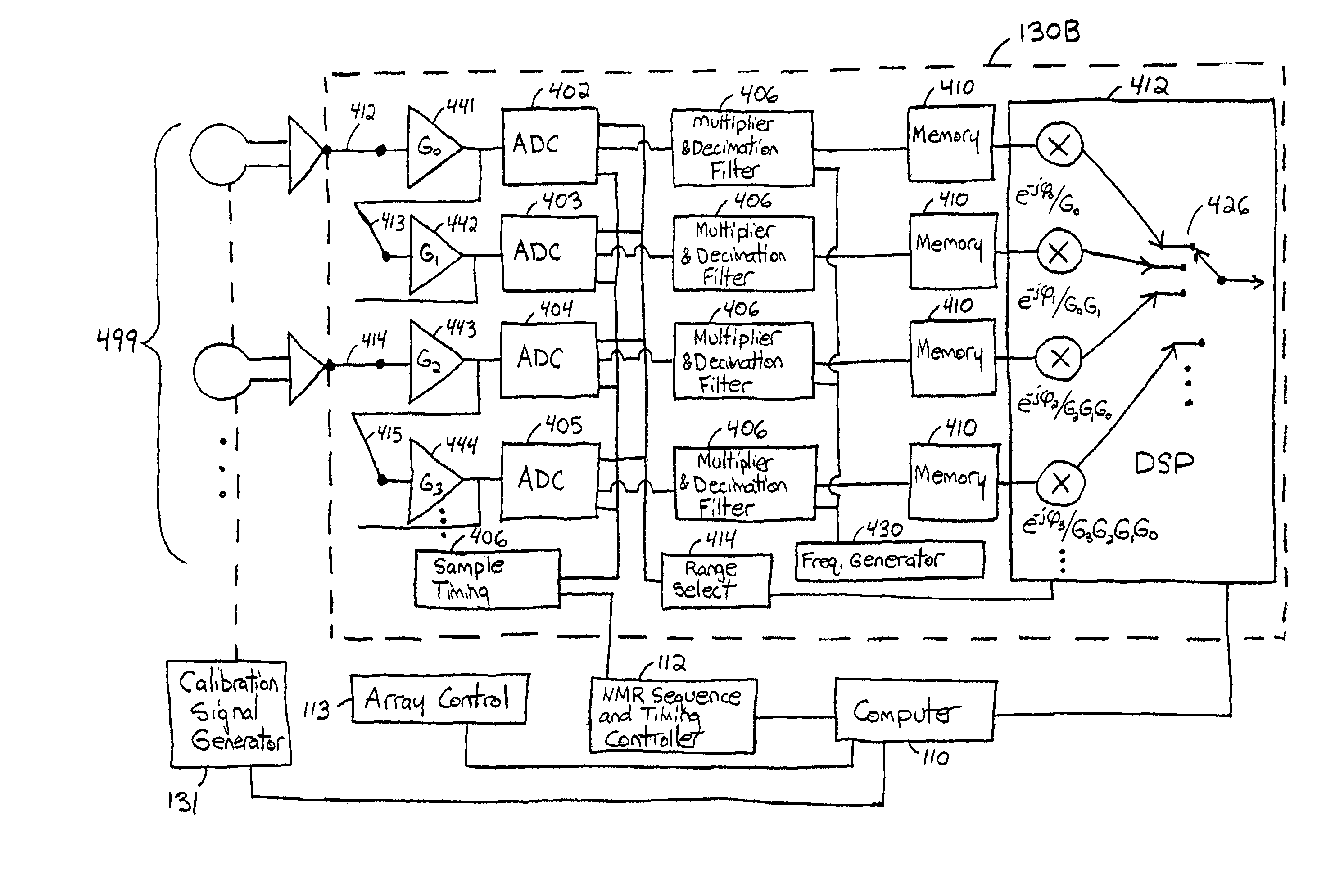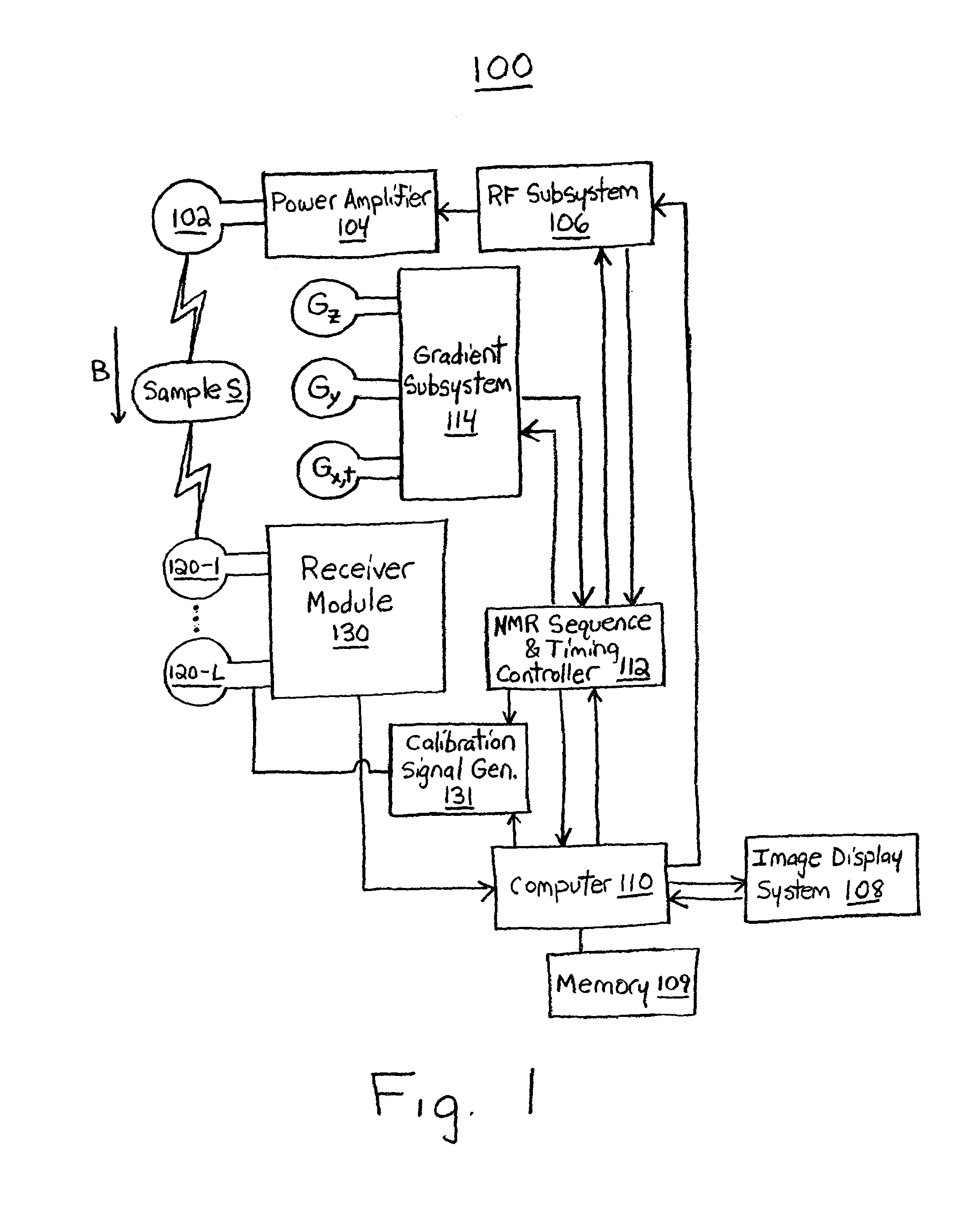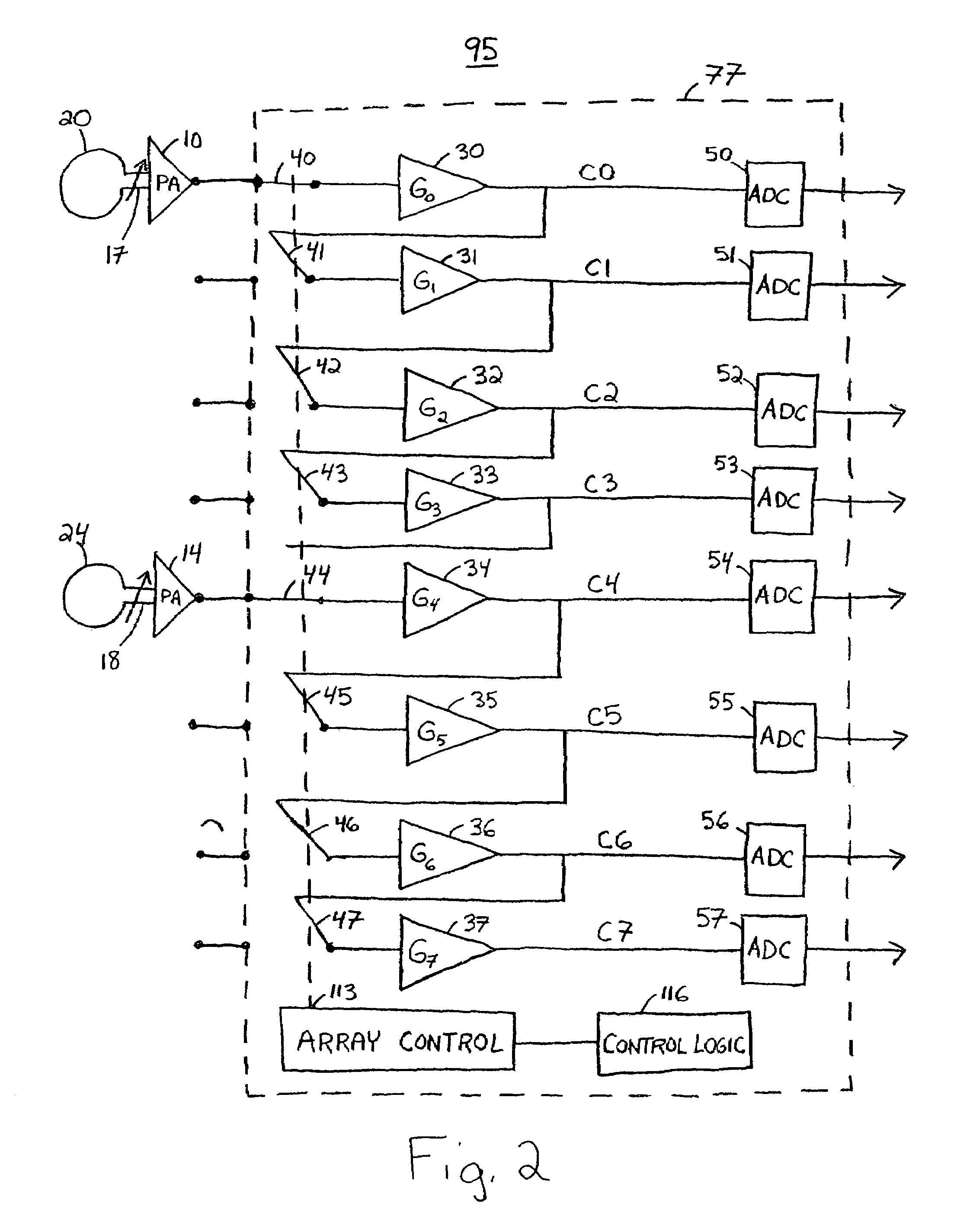Configurable matrix receiver for MRI
a matrix receiver and receiver technology, applied in the field of apparatus and methods for detecting and analyzing signals, can solve the problems of quantization noise, quantization noise, and difficulty in detecting the quantization value of the signal,
- Summary
- Abstract
- Description
- Claims
- Application Information
AI Technical Summary
Benefits of technology
Problems solved by technology
Method used
Image
Examples
Embodiment Construction
[0031]The present application provides a selectively configurable matrix receiver that can be optimized for different coil arrays. The receiver coil is split into multiple coils that are sensitive to only part of the imaging volume. Each coil is coupled to a different pre-amplifier, amplifier and digitizing channel. The individual coils of the array may be optimized for the particular imaging sub-volume. In one embodiment, the configurable matrix receiver described herein may be utilized, e.g., in an MRI system to perform full body scans.
[0032]In one embodiment, signals are received from an imaging volume by a plurality of receiving coils, e.g., an array. Each coil is coupled to a matrix that includes a plurality of amplifiers and a plurality of digitizers. Because multiple coils are used, each coil is associated with a sub-volume smaller than the entire imaging volume. Since the dynamic range requirement of a coil decreases in proportion to a decrease in the size of the imaging vol...
PUM
 Login to View More
Login to View More Abstract
Description
Claims
Application Information
 Login to View More
Login to View More - R&D
- Intellectual Property
- Life Sciences
- Materials
- Tech Scout
- Unparalleled Data Quality
- Higher Quality Content
- 60% Fewer Hallucinations
Browse by: Latest US Patents, China's latest patents, Technical Efficacy Thesaurus, Application Domain, Technology Topic, Popular Technical Reports.
© 2025 PatSnap. All rights reserved.Legal|Privacy policy|Modern Slavery Act Transparency Statement|Sitemap|About US| Contact US: help@patsnap.com



